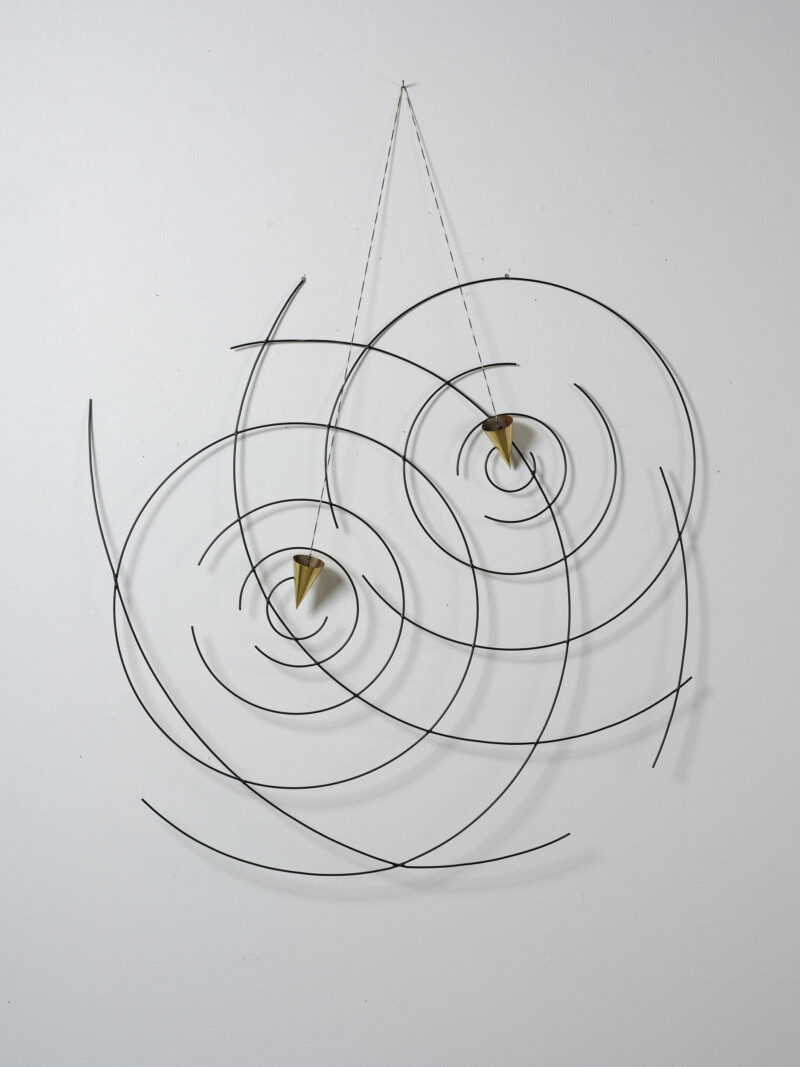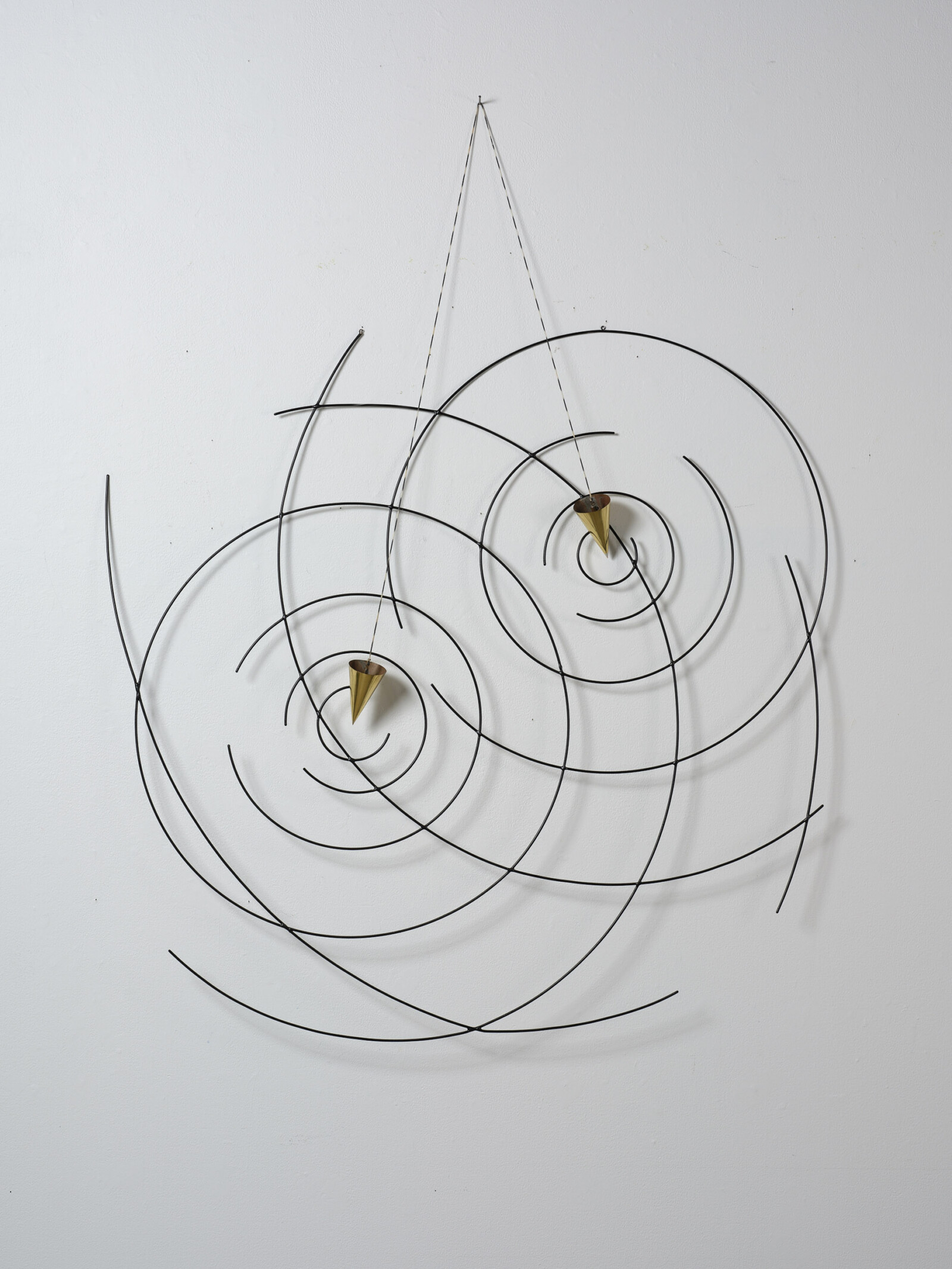DAWSON, Neil;
Cause and Effect
1984
No. 8 wire, steel, brass, cord and enamel
1150 x 1150 x 200mm

Cause and Effect is one of a small number of sculptures created by Neil Dawson in the 1980s that centre on the motif of the plumb bob. It featured in an important exhibition of contemporary New Zealand art, NZ XI, which toured Aotearoa and Australia in 1988.[1] Like many of Dawson’s works, Cause and Effect fuses the conventions of sculpture and drawing. It occupies real space, extending out from the wall on which it is mounted, but the lines that dominate it appear graphic, as if the work is an image rather than an object. In the catalogue for NZ XI, Francis Pound commented:
‘Sculpture, so it might be thought, is the most obdurately present of the arts: it does not depict space, it materially fills it; it does not pretend to three dimensions, it materially has them; it is not so much “image” as “thing”. But Dawson’s works are, in critic Peter Leech’s nice phrase, “elusive objects”: they seek to “escape the space they occupy”; their materiality serves only to pose, and to depose, an image.’[2]
Cause and Effect is composed of three elements: two conical brass plumb bobs, a cord painted to look like dotted lines that connect the plumb bobs to an anchor point or pivot point, and a series of arcs or loops of metal that evoke ripples. How these elements are to be understood to interact is not totally clear. The work might be understood to represent two plumb bobs, or it might be understood to represent one plumb bob in two positions. The dotted lines and ripples create a sense of movement, although, again, the nature of the movement is not totally clear. The plumb bobs might be flying out from the anchor point, following the path described by the dotted lines, or they might be swinging from these lines.
The title of the work is similarly ambiguous. Perhaps the term ’cause’ refers to the plumb bobs, which trigger the ‘effect’ of the ripples. Perhaps the cause is whatever has affected the motion of the plumb bobs. Perhaps the title refers to the relationship between the work (cause) and whatever the viewer perceives (effect). In extending out from the wall, the piece causes a shadow that complicates or punctures the pictorial effect. It also creates a side view that does not collapse into flatness like a two-dimensional drawing would. It thus poses an image, deposes it, and poses a new one as the viewer’s position shifts. It is a work of remarkable sensorial richness, elusive and full of illusion.
A substantially similar but larger plumb bob work, Untitled installation, was presented at the Graduate Centre Mall, City University of New York, in 1985 as part of the solo exhibition 5 Large Works. Another important piece of the period, Swinging the Lead, is at Auckland Art Gallery Toi o Tāmaki (1986/2/2).
[1] The other artists in NZ XI were Bill Culbert, Jacqueline Fraser, Jeffrey Harris, Christine Hellyar, Megan Jenkinson, Richard Killeen, Denis O’Connor, Maria Olsen, James Ross, and Boyd Webb.
[2] ‘Elusive Objects’ is the title of an essay by Peter Leech published in Art New Zealand 25 (Spring 1982), https://art-newzealand.com/25-dawson/.
Exhibition History
NZ XI, Auckland City Art Gallery (later Auckland Art Gallery Toi o Tāmaki), 17 February to 10 May 1988 (toured)
Provenance
2025–
Fletcher Trust Collection, purchased from Art + Object, Tāmaki Makaurau, 17 June 2025, lot 52
?–2025
Collection of John and Sheana Gellert, Tāmaki Makaurau

